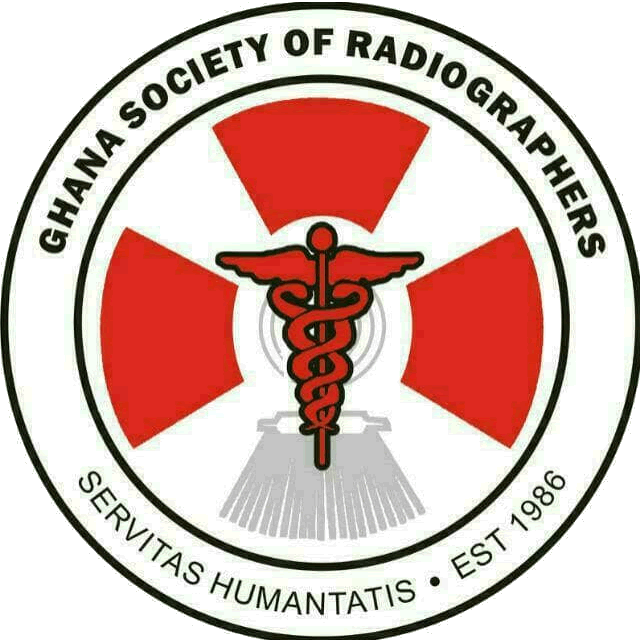- Background
Radiographers are medical imaging and radiotherapy practitioners who:
- are professionally accountable to the patients’ physical and psychosocial wellbeing, prior to, during and following examinations or therapy;
- take an active role in justification and optimisation of medical imaging and radio therapeutic procedures
- are key-persons in radiation safety of patients and third persons in accordance with the “As Low As Reasonably Achievable (ALARA)” principle and relevant Legislation
There are two types of radiographers: Diagnostic and Therapy Radiographers.
- Diagnostic Imaging Radiographers or Medical Imaging Practitioners are responsible to perform safe and accurate imaging examinations and post processing, using a wide range of sophisticated imaging equipment and techniques. These techniques include the use of:
- very sophisticated X-ray equipment in Computed Tomography (CT) Scanning and Fluoroscopic Imaging
- high frequency sound waves in Medical Ultrasonography
- strong magnetic fields and radio waves in Magnetic Resonance Imaging (MRI)
- radioactive tracers in Nuclear Medicine and
- general X-ray equipment in General Radiography
- Therapeutic Radiographers are responsible for the preparation and performance of safe and accurate high-energy radiation treatments, using a wide range of sophisticated equipment and techniques, such as:
- simulation with X-rays or magnetic fields, to target the area to be treated
- computer planning to produce a plan of the dose distribution across the area to be treated, based on the simulation
- the production of individual immobilization or beam attenuation devices
- irradiation of the tumour with external beams, or with radio-active sources
- Education and Regulation
- Radiographers go through a minimum of 4years undergraduate university education which leads to the award of BSc Diagnostic Radiography or BSc Therapy Radiography with a mandatory 1year post qualification clinical internship at accredited health facility.
- Their training has both 3 basic components:
- practical Clinical work in accredited health facilities under the supervision of Clinical tutors of the Training Institutions
- Classroom course work
- Project work in the professional field
- They write a state post-internship examination administered by the Allied Health Professions Council
- They have to register with the Allied health Professional Council before they can practice
- The practice of Radiography is regulated by the Allied health Professional Council, established by The Health Professions Regulatory Bodies ACT, 2013 (ACT 857).
- A number of radiographers already hold post-graduate certificates, diplomas, MSc, MPHil and also PhD in various fields in diagnostic imaging and radiation therapy and are either in clinical practice or in the academia.
- Value of Radioghraphers
- They are members of the Core clinical team;
- Radiographers are in direct contact with the patient
- Radiographers perform diagnostic investigations directly on the patients at the OPD, on the wards, in the theatre and at the Accident and Emergency
- Sonographers perform ultrasound scans at the antenatal clinics
- Therapy radiographers directly treat cancer patients
- Their services are required 24 hours, 365 days per annum cover
- Radiographers give 24hour cover of radiologic services for Accident and Emergencies, Trauma, Ward, the Theatres and at the OPD
- Radiographers are on-call duties
- They work to working to cover night and weekends to cover trauma patients, urgent ward patients and emergencies CT Scans
- Responsibilities of the radiographers
- As professionals, radiographers are responsible for their own actions
- They are responsible for the patient under their care: before, during and after the examination
- They are also responsible for the radiation safety of the patient and their accompanying persons
- Radiographers handle some of the most expensive hospital equipment (eg in 2015 an 1.5T MRI equipment will cost between over USD 500,000 – 1million)
- Radiographers give definitive reports and preliminary reports
- Radiographers who perform ultrasonography and Sonographers give definitive reports on their investigations
- Radiographers give findings in examinations, for example on emergency CT scans and Emergency X-rays to requesting physicians
- Radiographers who have undertaken Advance Practice radiography programme are trained to give definitive independent clinical comments on radiographs
- Scarcity
- The training and practice of radiography is highly specialised
- Few people go into Radiography
- Average of 26 practitioners are produced out each year by the only two training institutions:
20 Diagnostic Radiographers from SBAHS, University of Ghana
3 Therapy Radiographers from SBAHS, University of Ghana
3 Diagnostic sonographers from SAHS, KNUST
- Currently there are a little over 100 Radiographers in the Public service, i.e the Teaching Hospitals and Ghana Health Service.
- As at 2015 there were about 250 certified radiographers nationwide to a population of about 26million giving Practitioner to inhabitant ration of one radiographer to more than 100,000 persons in Ghana!
- Attrition rate
A number of Radiographers keep leaving for greener pastures as a result of:
- low remuneration, absence of or poor conditions of service
- the scare of potential immediate or permanent negative effects of ionizing radiation
- Volume of Work
- Due to the very high population to radiographer ratio radiographers they (radiographers) tend to work many hours than the required 40hours per week
- Many facilities have Radiographers who work 24hours and 7 days in the week
- Risks:
- Radiographers are one group of the health practitioners who are constantly in direct contact with patients
- They are exposed to ionizing radiations in diagnostic imaging, radiotherapy and to radioactive sources in nuclear medicine.
This explains why their counterparts professionals in some establishments e.g. Ghana Atomic Energy Commission receive 40% of the basic as radiation risk allowance.
- Equipment used by Radiographers are High voltage equipment: Megavolts and kilovolts
- Some of the equipment used by Radiographers employ very strong magnetic fields (1.5 Tesla etc.) and changing radiofrequency pulses.
